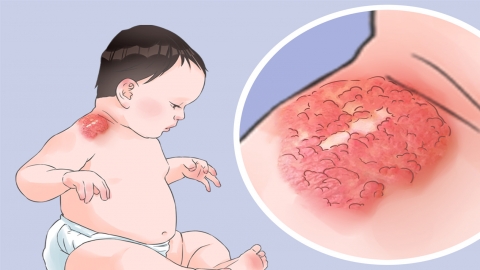Are there several types of infantile skin hemangiomas, and can they be treated?
Generally, infantile cutaneous hemangiomas mainly include strawberry hemangiomas, cavernous hemangiomas, and mixed hemangiomas. Most cases have effective treatment options, with specific approaches determined by the type, size, and location of the hemangioma. If there are concerns, it is recommended to seek medical consultation early. Detailed analysis is as follows:

Among common types of infantile cutaneous hemangiomas, strawberry hemangiomas typically present as red, raised patches that appear within a few weeks after birth; some may regress spontaneously. Cavernous hemangiomas usually manifest as soft, subcutaneous masses with a bluish or purplish color and a relatively soft texture. Mixed hemangiomas exhibit features of both types, showing a red, raised surface along with a soft mass beneath the skin. Different types vary in their growth patterns and tendencies for regression.
There are various treatment options available for infantile cutaneous hemangiomas. Small hemangiomas without significant growth may be initially observed, allowing time for possible spontaneous regression. For rapidly growing lesions or those affecting appearance or function, treatments such as medication, laser therapy, or cryotherapy can be considered. Medication—administered topically or orally—aims to inhibit hemangioma growth. Laser therapy helps improve surface discoloration and elevation, while cryotherapy is suitable for small, superficial hemangiomas. Proper local wound care is essential following treatment.
Upon detecting an infantile cutaneous hemangioma, prompt medical evaluation is necessary to avoid delays or inappropriate self-management. If abnormal symptoms such as redness, swelling, or discharge occur after treatment, timely communication with a physician is important to ensure safe and effective management.







